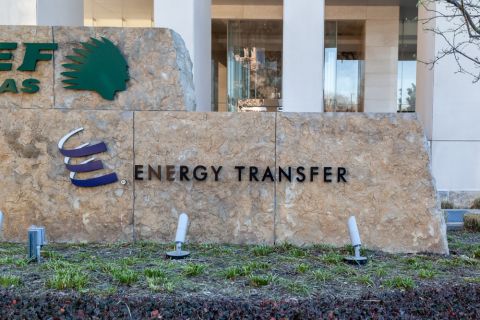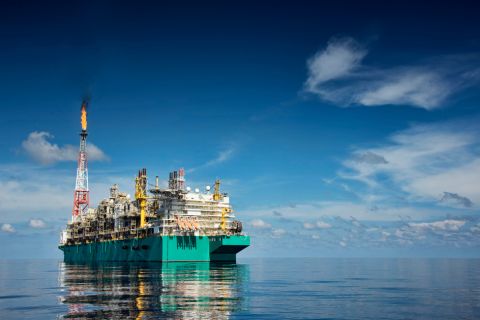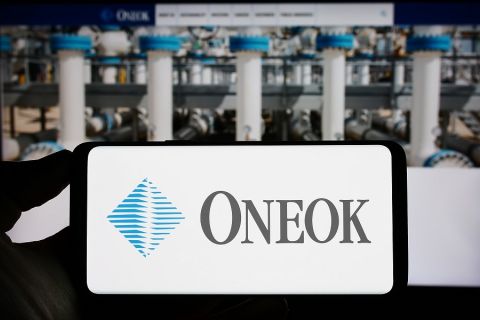Jackup rigs are increasingly being used to drill wells in ever greater water depths, HP/HT conditions, and harsher environments. Real-time structural integrity monitoring can ensure the ongoing safety of operations as well as validate and calibrate simulation models of the drilling and well equipment used in the planning of operations.
New-generation jackup rigs are capable of operations in water depths of 150 m (492 ft), raising new challenges for drilling equipment and well systems. The increased deflections of the jackups and the higher loading this generates on equipment are key challenges to the industry. This is more so where HP/HT operations require heavy-duty drilling equipment with significant mass and stiffness.

FIGURE 1. The monitoring system consisted of motion, strain, and environmental sensors. (Images courtesy of 2H and Pulse Structural Monitoring)
Developing the Valemon field
The decision to use the West Elara (CJ-70) jackup rig to drill the HP/HT Valemon field in 135 m (443 ft) of water raised particular challenges for operator Statoil. The gas and condensate field is located on the Norwegian Continental Shelf and is one of the biggest undeveloped gas fields in the North Sea.
The field is being developed using the 9,000-metric ton, 20-slot capacity Valemon platform. The steel jacket was installed in June 2012, and the two-year predrilling phase with the West Elara began in September 2012. In 2014 the jacket topsides will be installed, after which the main drilling phase will commence with the West Elara until completion.
Choosing integrity monitoring. Simulations completed before operations began predicted high loading in the drilling and well equipment, primarily due to high lateral motions of the West Elara jackup measuring up to 1.5 m (4.9 ft). The increased height of the West Elara during main drilling to accommodate the Valemon topsides was the more critical phase. The simulation models demonstrated that long-term fatigue and extreme loading performance of the system were acceptable for both drilling phases.
However, a range of assumptions had to be made in the simulation models. Due to the sensitivity of the West Elara motions to these assumptions, integrity monitoring was chosen to confirm the validity of the simulation models and as a means to confirm safe operations on an ongoing basis.
Real-time monitoring system. The real-time integrity monitoring system deployed on the West Elara jackup and Valemon jacket had three main objectives:
- During the predrilling phase, to monitor the deflections of the West Elara and the Valemon jacket as well as the bending loads and fatigue damage accumulation to the conductor, high-pressure riser, and overshot;
- To confirm that the deflections of the West Elara and Valemon platform remained within expected levels and that the loading and fatigue damage accrued during drilling operations remained within the allowable safe design limits; and
- To compare the measured responses to the simulation models for predrilling to verify simulation model accuracy and calibrate to improve predictions. Using the improved model, the system reevaluated main drilling predicted responses.
Real-time monitoring equipment. The real-time monitoring system features three main types of measurement (Figure 1):
- Motion sensors. Three-axis precision accelerometers, installed within EExd-rated housings (due to installation in zoned areas), were hardwired back to a central control console on the West Elara via armored cable;
- Strain sensors. Specially designed “strain sticks” to measure dynamic curvatures were installed on equipment. Each strain stick was linked to an EExd-rated logger installed on the West Elara or Valemon deck and also hardwired back to the central control console; and
- Environmental sensors. An air-gap wave radar was used to measure wave height and period, and an acoustic doppler current profiler measured current speed and direction through depth.

FIGURE 2. Jackup motion response amplitude operators indicate typical measured motion of the West Elara for various wave periods and heights.
All information from the central control console could be accessed on the rig and also remotely over the Internet (via the West Elara’s communication links) such that engineers onshore could review and interpret the data in real time where required.
Measured data
The monitoring system demonstrated that the deflections of the West Elara were not a concern to the well system, typically being less than ±10 cm (4 in.). The Valemon jacket deflections were larger than modeled, but again this was not considered a concern to the well system as motions were less than ±4 cm (1.6 in.). It is, however, noted that it was not possible to confirm the conclusions from the simulations under extreme loading conditions since this would require a number of measurements from such events.
The measured fatigue damage accumulation to the well system is compared with predictions. Although over-predicted by the simulation model, minimal fatigue damage was observed to have been accrued even under large wave conditions. Collectively the data recorded demonstrated that Statoil was operating within the load and fatigue design limitations of the system over the duration of the monitoring campaign. These findings also provide a good indication that responses will remain within acceptable levels for the main drilling phase since simulations were shown to be conservative.
Simulation model calibration. Typical measured motion of the West Elara is shown for various wave periods/ heights in Figure 2. The West Elara natural periods were measured at both 5.2 seconds (torsional) and 6.7 seconds (sway/surge). The motions were shown to have nonlinear variations with wave height and direction, and the dominant motion direction tended to be 60° from the surge direction.
The data provided invaluable insight into the complex responses of the West Elara in the field, but this complex response presented a number of challenges to calibrate the model. This is due to the large number of potential parameters affecting the calibrations; the number of assumptions made (due to limitations in the data collected about equipment on the rig); and the influence of the jacket motions, which are not considered in the model.
Calibration of the model is therefore only achieved in part with good calibration of sway/surge natural periods and conservative prediction of West Elara motion. However, further work is required to progress the calibration, requiring additional data.
Additional work
The monitoring system successfully delivered real-time information on the integrity of the well system, demonstrating that the responses of critical equipment remained within the design limits during the campaign duration. The dynamic motions of the West Elara jackup and Valemon jacket also delivered important data for future operations, indicating these are expected to remain within acceptable limits for the main drilling phase.
The data allow visualization of the complex responses of the West Elara jackup to wave loading as well as observation that the Valemon jacket movements are significant to the well system. Although these in situ data only allowed preliminary model calibration to be achieved, they successfully allow a greater understanding of the parameters affecting the jackup motion characteristics. They provide valuable lessons on how the integrity monitoring system should be configured and the required supporting data recorded to further improve model calibration and system understanding.
For future work it also is important to investigate how to accurately simulate rig behavior under extreme weather conditions based on measured data from normal weather conditions.
Recommended Reading
Venture Global Acquires Nine LNG-powered Vessels
2024-03-18 - Venture Global plans to deliver the vessels, which are currently under construction in South Korea, starting later this year.
Energy Transfer Asks FERC to Weigh in on Williams Gas Project
2024-04-08 - Energy Transfer's filing continues the dispute over Williams’ development of the Louisiana Energy Gateway.
Canada’s First FLNG Project Gets Underway
2024-04-12 - Black & Veatch and Samsung Heavy Industries have been given notice to proceed with a floating LNG facility near Kitimat, British Columbia, Canada.
Apollo Buys Out New Fortress Energy’s 20% Stake in LNG Firm Energos
2024-02-15 - New Fortress Energy will sell its 20% stake in Energos Infrastructure, created by the company and Apollo, but maintain charters with LNG vessels.
FERC Approves ONEOK Pipeline Segment Connecting Permian to Mexico
2024-02-16 - ONEOK’s Saguaro Connector Pipeline will transport U.S. gas to Mexico Pacific’s Saguaro LNG project.





